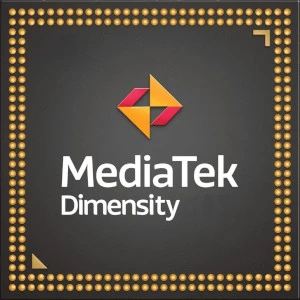MediaTek Dimensity 700 vs MediaTek Dimensity 820
When comparing the MediaTek Dimensity 700 and Dimensity 820 processors, we can see some similarities and differences in their specifications.
Both processors are built on the same 7nm lithography and have 8 cores in total. They also both have support for the ARMv8.2-A instruction set, which enhances their processing capabilities. The TDP (Thermal Design Power) of both processors is also identical at 10 watts, which indicates their power efficiency.
In terms of CPU architecture, the Dimensity 700 features 2x 2.2 GHz Cortex-A76 cores and 6x 2 GHz Cortex-A55 cores. On the other hand, the Dimensity 820 has a more powerful configuration with 4x 2.6 GHz Cortex-A76 cores and 4x 2.0 GHz Cortex-A55 cores. This suggests that the Dimensity 820 may have a performance advantage over the Dimensity 700, especially in tasks that require higher processing power.
One notable difference between these processors is the inclusion of a Neural Processing Unit (NPU) in the Dimensity 820. This NPU is designed to accelerate tasks related to machine learning and artificial intelligence, providing an extra level of processing capability for those specific applications. The Dimensity 700, on the other hand, does not have this feature.
In summary, the Dimensity 820 boasts a more powerful CPU configuration compared to the Dimensity 700, offering potentially better performance in demanding tasks. Additionally, the inclusion of an NPU in the Dimensity 820 provides enhanced capabilities in machine learning and AI-related applications. However, both processors share similar lithography, number of cores, instruction set support, and power efficiency.
Both processors are built on the same 7nm lithography and have 8 cores in total. They also both have support for the ARMv8.2-A instruction set, which enhances their processing capabilities. The TDP (Thermal Design Power) of both processors is also identical at 10 watts, which indicates their power efficiency.
In terms of CPU architecture, the Dimensity 700 features 2x 2.2 GHz Cortex-A76 cores and 6x 2 GHz Cortex-A55 cores. On the other hand, the Dimensity 820 has a more powerful configuration with 4x 2.6 GHz Cortex-A76 cores and 4x 2.0 GHz Cortex-A55 cores. This suggests that the Dimensity 820 may have a performance advantage over the Dimensity 700, especially in tasks that require higher processing power.
One notable difference between these processors is the inclusion of a Neural Processing Unit (NPU) in the Dimensity 820. This NPU is designed to accelerate tasks related to machine learning and artificial intelligence, providing an extra level of processing capability for those specific applications. The Dimensity 700, on the other hand, does not have this feature.
In summary, the Dimensity 820 boasts a more powerful CPU configuration compared to the Dimensity 700, offering potentially better performance in demanding tasks. Additionally, the inclusion of an NPU in the Dimensity 820 provides enhanced capabilities in machine learning and AI-related applications. However, both processors share similar lithography, number of cores, instruction set support, and power efficiency.
AnTuTu 10
Total Score
GeekBench 6 Single-Core
Score
GeekBench 6 Multi-Core
Score
CPU cores and architecture
| Architecture | 2x 2.2 GHz – Cortex-A76 6x 2 GHz – Cortex-A55 |
4x 2.6 GHz – Cortex-A76 4x 2.0 GHz – Cortex-A55 |
| Number of cores | 8 | 8 |
| Instruction Set | ARMv8.2-A | ARMv8.2-A |
| Lithography | 7 nm | 7 nm |
| TDP | 10 Watt | 10 Watt |
| Neural Processing | NPU |
Memory (RAM)
| Max amount | up to 12 GB | up to 16 GB |
| Memory type | LPDDR4X | LPDDR4X |
| Memory frequency | 2133 MHz | 2133 MHz |
| Memory-bus | 2x16 bit | 2x16 bit |
Storage
| Storage specification | UFS 2.2 | UFS 2.2 |
Graphics
| GPU name | Mali-G57 MP2 | Mali-G57 MP5 |
| GPU Architecture | Mali Valhall | Mali Valhall |
| GPU frequency | 950 MHz | 650 MHz |
| Execution units | 2 | 5 |
| Shaders | 32 | 80 |
| DirectX | 12 | 12 |
| OpenCL API | 2.1 | 2.1 |
| OpenGL API | ES 3.2 | ES 3.2 |
| Vulkan API | 1.2 | 1.2 |
Camera, Video, Display
| Max screen resolution | 2520x1080@90Hz | 2520x1080@120Hz |
| Max camera resolution | 1x 64MP, 2x 16MP | 1x 80MP, 1x 32MP + 1x 16MP |
| Max Video Capture | 2K@30FPS | 4K@30fps |
| Video codec support | H.264 (AVC) H.265 (HEVC) VP9 |
H.264 (AVC) H.265 (HEVC) VP9 |
Wireless
| 4G network | Yes | Yes |
| 5G network | Yes | Yes |
| Peak Download Speed | 2.77 Gbps | 2.77 Gbps |
| Peak Upload Speed | 1.2 Gbps | 1.2 Gbps |
| Wi-Fi | 5 (802.11ac) | 5 (802.11ac) |
| Bluetooth | 5.1 | 5.1 |
| Satellite navigation | BeiDou GPS Galileo GLONASS NavIC QZSS |
BeiDou GPS Galileo GLONASS QZSS |
Supplemental Information
| Launch Date | 2021 Quarter 1 | 2020 May |
| Partnumber | MT6833V/ZA, MT6833V/NZA | MT6875 |
| Vertical Segment | Mobiles | Mobiles |
| Positioning | Mid-end | Mid-end |
Popular comparisons:
1
Qualcomm Snapdragon 821 vs Qualcomm Snapdragon 450
2
Qualcomm Snapdragon 7s Gen 2 vs Samsung Exynos 7870
3
Samsung Exynos 2400e vs HiSilicon Kirin 9000E 5G
4
Unisoc T8300 vs Qualcomm Snapdragon 8 Elite 2
5
MediaTek Dimensity 800U vs MediaTek Helio G37
6
MediaTek Dimensity 6100 Plus vs MediaTek Helio G35
7
Qualcomm Snapdragon 439 vs Samsung Exynos 1280
8
Unisoc Tiger T616 vs MediaTek Dimensity 9000
9
MediaTek Helio P22 vs Qualcomm Snapdragon 7 Gen 4
10
MediaTek Dimensity 9200 vs HiSilicon Kirin 990 5G
